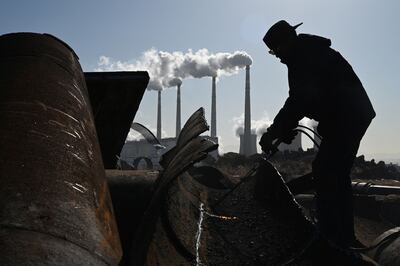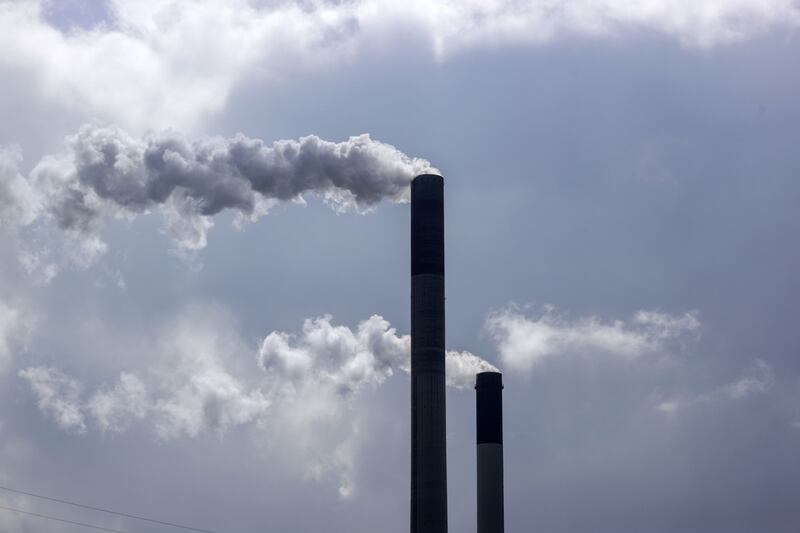Live updates: Follow the latest news on Cop28
As climate negotiators continue crunch talks at Cop28 in Dubai, a key talking point will be how to speed the transition away from the burning of fossil fuels.
Despite efforts at Cops over the decades, consumption of coal, one of the most carbon-intensive fossil fuels, continues to rise.
The global demand for coal last year exceeded 8.3 billion tonnes, a record, according to the International Energy Agency (IEA).
The amount of energy generated using coal was also a record, at 10,440 terawatt hours, or 36 per cent of all energy produced.
In 2023, there have been further rises with the IEA reporting that demand was likely to have increased 1.5 per cent in the first six months of the year.
Coal produces about twice the amount of carbon dioxide for a given quantity of energy generated compared with natural gas. So increases in its use make achieving the 45 per cent reduction in greenhouse gas emissions by 2030 – needed to keep temperature rises to within 1.5°C of pre-industrial levels – near impossible.
Aside from being burnt to generate energy, coal is heavily used in the production of plastics, fertilisers and other fuels, all of which generate significant carbon emissions.
Yet there are reasons to believe coal demand may peak.
Not enough to reach climate goals
In its World Energy Outlook 2023, the IEA states that, based on current policies: "The momentum behind clean energy transition is now sufficient for global demand in coal, oil and natural gas to reach a high point before 2030."
However, the modest declines that are forecast before the end of the decade are "far from enough to reach global climate goals".
Prof Lucas Davis from the Haas School of Business, part of the University of California Berkeley, said that "it's very hard to make these predictions".
"In 2016, a bunch of smart people announced China's coal consumption had peaked; in retrospect, they were wrong. China's coal consumption is higher than ever with plans to build more coal-fired power stations," he said.
Prof Davis said he would prefer to look at what countries do rather than what they say they are going to do.
"If you look at the data, last year as a planet we used more coal than we ever used in the history of planet Earth."
In Europe and North America there has been a move away from the use of coal and towards the burning of natural gas, which is a renewable energy and significantly less carbon intensive.
"Gas became cheaper than coal in the US. Initially the transition in the US was mostly based on price – production costs for gas were lower," said Edgar Hertwich, professor in industrial ecology at the Norwegian University of Science and Technology.
US coal consumption increased from about 400 million tonnes a year in 1960 to approximately one billion tonnes a year in the early 2000s, but since then has more than halved, US Energy Administration statistics indicate.
In the EU, meanwhile, European Commission figures indicate that hard coal consumption fell from about 500 million tonnes in 1990 to about 250 million tonnes in 2018.
However, coal consumption in Europe increased by 2 per cent last year, largely the result of a cut in Russian gas imports.
But the trajectory remains downwards, with energy think tank Ember reporting a 23 per cent fall in the power generated from coal in the European Union in the first six months of this year.
"In May, coal set a record by generating less than 10 per cent of the EU's electricity generation for the first time ever," the organisation said in its report released in August.
Much of the reason why coal consumption is yet to peak, despite what is happening in North America and Europe, is because China and India are building coal-fired power stations at a rapid rate. Each facility is likely to remain operational for decades.
China has more than 130 billion tonnes of proven coal reserves, the fourth largest of any country, behind the US, Russia and Australia, so by investing in coal-fired power plants, the country safeguards its energy security.
A single plant typically has a generation capacity of about one gigawatt (GW). China's approval last year of 106 GW of coal-fired power generation capacity, an all-time record, worked out at more than two plants each week.
The breathless pace has continued this year, with the Centre for Research on Energy and Clean Air (CREA), a think tank in Finland, reporting that in the first six months of this year, the country announced 41 GW of new projects.
India, which has the world's fifth largest coal reserves, is the other key current investor in coal-fired power plants and earlier this year "ushered in a new goal permitting spree" the CREA said.
India also has 65.3 GW of coal-fired power plant capacity "under active development", according to research published by CREA this year.

CREA said that there was no need in India for new plants to move into the construction process to meet the country's National Electricity Plan.
"New coal power projects are unnecessary to meet demand and would come with significantly higher socio-economic and environmental costs than clean energy," the organisation said when it released its findings.
Prof Hertwich described China's continued investments in coal-fired power capacity as "a big problem", albeit balanced against the country's heavy investment in renewable energy.
Cheap renewable energy
The speed of the transition from coal is likely to be influenced by not just the financial case for renewable energy, Prof Davis said.
"Renewables have become cheap already," Prof Davis said. "The question is more about the political will to make these changes, to prioritise renewables before coal.
"In places like the US, we’ve been using fossil fuels to build our economy for over 100 years. We’re not really in a position to tell other countries if they need to develop, they need to get off fossil fuels quicker than we did."
Even if the forecasts of the IEA prove accurate and demand for coal peaks soon, as do overall greenhouse gas emissions, the world will still be off track in terms of limiting temperature increases to 1.5°C and avoiding many of the more serious consequences of climate change.
"We might have reached peak greenhouse gases. That’s great news, but we should’ve done that 20 years ago," Dr Phillip Williamson, honorary associate professor in the School of Environmental Sciences at the University of East Anglia in the UK, said.
"There’s no way now we’re going to get ourselves out of a really deep mess. Every delay just makes it worse and worse."







